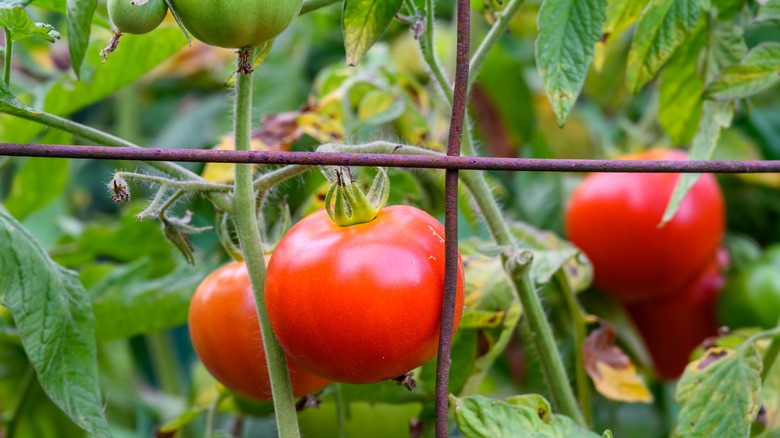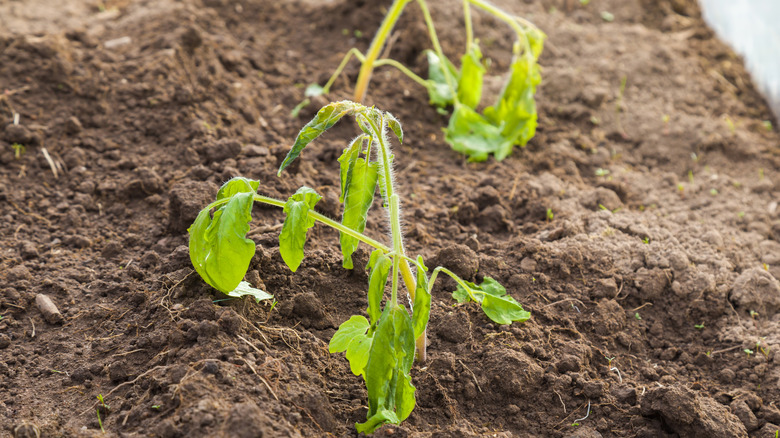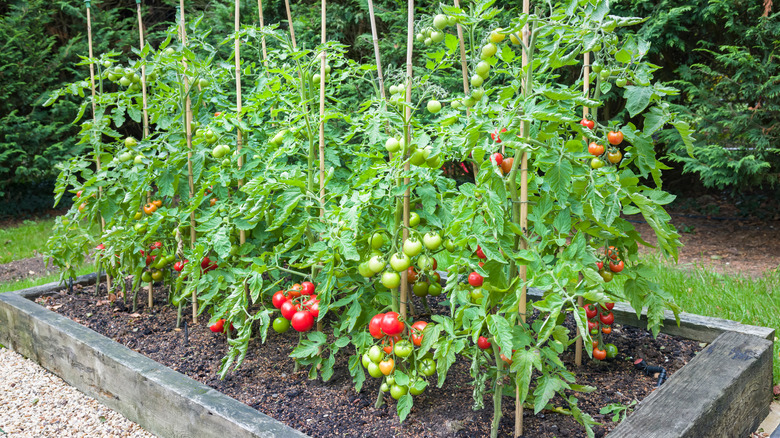How And When To Stake Tomatoes
Tomato plants are a popular and rewarding choice for your garden, but it's crucial to provide them with proper support to ensure a bountiful harvest and to keep them healthy. By staking your tomato plants, you help maintain a sturdy structure, enhance air circulation, prevent diseases, and elevate the quality of the fruit they produce. Timing plays a significant role, and it's recommended to stake your tomatoes shortly after transplanting them or when they're still in the seedling stage. Acting early is important because as the plants grow, their stems become thicker, and it's more difficult to handle them without causing damage.
Ideally, aim to stake your tomatoes when they reach a height of around six to 12 inches, depending on the specific variety and how fast they're growing. This way, you can provide them with the necessary structural support needed and train them to grow upward, which makes it a lot easier to manage and care for them throughout the entire growing season.
The benefits of staking your tomatoes
Staking tomatoes goes beyond providing physical support, it also plays a vital role in disease prevention and fruit protection. When tomato plants come into contact with damp soil, they become more susceptible to fungal infections and other diseases. By elevating the plants through staking, you create a natural barrier that helps reduce the chances of possible soil-borne diseases that infect the plant.
In addition to disease prevention, staking also boosts fruit quality. When tomatoes are staked, the fruits are kept off the ground, which prevents rotting and damage. Fruits that lie directly on the soil are more prone to decay due to excess moisture and pests. Furthermore, staking allows for better air circulation around the foliage, which not only reduces the risk of fungal diseases but also encourages optimal fruit growth. Adequate airflow helps the fruits grow larger, stronger, and become more flavorful, contributing to a more successful and rewarding harvest.
There are four different methods of staking
There are four popular methods that you can use for staking your tomatoes. The string method provides reliable support for climbing and thriving established plants. The plants are arranged in a row, and a support beam is positioned horizontally, approximately 10 feet above the plants. Each plant is interwoven with garden twine that stretches from the beam to the ground. Loose knots are tied around the base of each plant using the jute, and more knots are added as the plants grow. This particular method also stimulates upward growth. The single-stake method involves inserting a stake into the ground and spaced a few inches away from each plant. Once the plants reach approximately 1 foot in height, they are tied to the stake using garden twine. The double-stake method is just like the single and provides ample support for heavier varietals like heirlooms. Two stakes are placed on opposite sides of the base of each plant, and twine is tied around the stem and stakes.
The Florida weave is a tomato staking method originating from the sunshine state, where tomatoes are planted in rows with a 2-foot gap between each plant. Stakes are placed at the beginning, end, and between every three plants, and jute or twine is woven in front and behind the plants. This creates a supportive structure for tomato vines as they grow.


